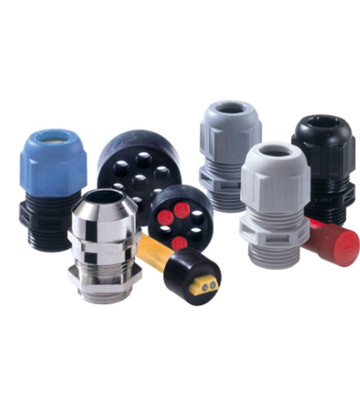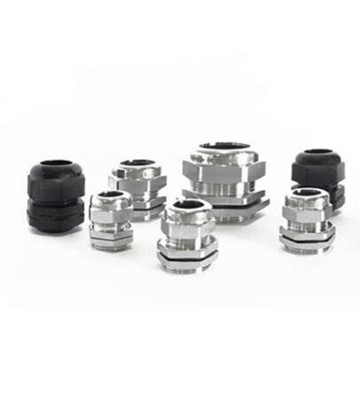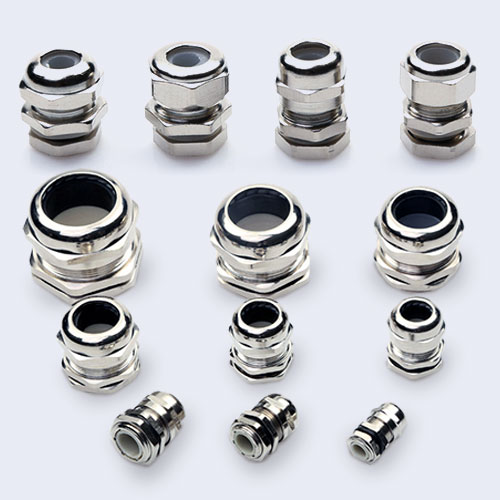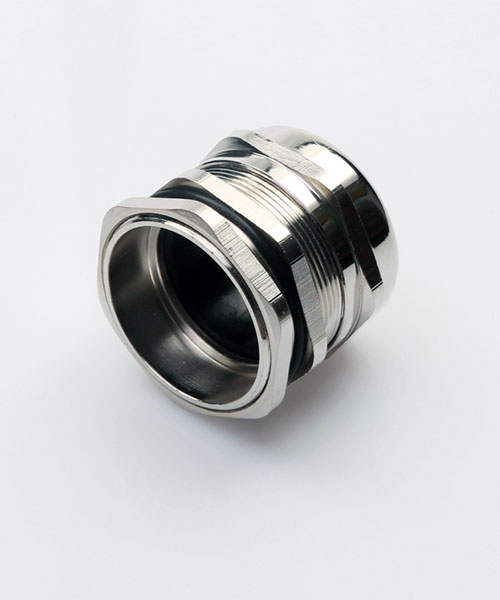Established in 2009, Yueqing Bolun Electric Co., Ltd. is an industrial and trade enterprise specializing in the research & development of Cable gland, Explosion-proof armored connector, Marine stuffing box, Hose connector and other cable accessories.
The most fundamental difference between cable gland designs is their material
Aug 04, 2022
What is a cable connector?
Cable gland sleeves are defined as mechanical cable entry modules, meaning they are used to securely attach cables to equipment. Unlike household plug-ins and other conductive electrical connections, cable glands are not built for quick disconnection. Instead, they provide a secure and persistent connection to the device. Cable connectors serve almost any industry that uses electrical equipment. Wire clamps are used for cabling and wiring in a variety of electrical, instrumentation, control and automation systems, providing use for power, data and telecommunications lines.
What is the use of cable connectors?
The first question to answer is why do we use cable glands? In short, cable fittings are considered critical safety equipment for electrical installations. Their primary purpose is to act as glanding and terminating devices between cables and the electrical equipment to which they are connected. In this role, wire clips serve several core purposes:
Connection protection: The cable gland sleeve glands the external cable sheath and protects the wiring and electrical housing from dust, dirt, moisture, and other environmental hazards that may affect the installation function. Some wire clamps may be designed to provide additional glanding in applications where environmental conditions may occur.
Stress relief: Wire clamps attach the cable to the device at a fixed Angle. This connection provides stress relief and resistance to torsion and tension to prevent disconnection.

Different types of cable connectors
With so many applications for cable accessories, there are a large number of wire clips to choose from. Then how many types of cable joints are there? There are as many applications as there are varieties. Most cable fittings are characterized by factors such as material, armoring compatibility and specific application requirements. Here are some of the most common features of cable accessories organized by category:
The most fundamental difference between cable gland designs is their material
1. Material characteristics
The most fundamental difference between cable joint designs is their material. Some of the most common materials used for cable gland sleeves include:
Metal: Metal cable glanding sleeve is widely used, stainless steel, aluminum and nickel-plated brass and other materials. Rigid stability, long-term durability, and electrical and thermal conductivity are some of the key advantages of this material. Wire clips are ideal for applications requiring chemical stability and mechanical strength. Some examples of applications include the IT, power, medical, and chemical industries.
Plastics: Plastic cable connectors are another popular material choice due to their adaptability and resistance to various corrosive elements. Plastic cable clamps are usually made of polyamide or nylon and usually have a claw shape and gland design, making them highly adaptable. Plastics are also resistant to salt water, weak acids and oils, making them an excellent choice for various industries. Some examples include telecommunications, Marine, and flexible cable applications.
2. Armor compatibility features
Another fundamental difference between cable stress relief devices is whether they are suitable for armored or non-armored cables. Industrial cable gland sleeves are available for both varieties. Know which type of cable is used for your operation to determine the appropriate wire clamp for the application, whether you:
Armored: Armored cables are designed with an extra layer of protection to prevent damage. Such cables are often used in applications where the area may face a greater threat of mechanical damage. Armour is usually made of a single wire, braided wire or double steel tape. Cable gland sleeves designed for armored cables will have design features that make them more compatible with cable armoring.
Non-armoured: Non-armoured cables are more basic in design than armored cables and do not add mechanical protection. They appear in fixtures with no apparent risk of mechanical damage. Cable glands designed for non-armored cables will not be as versatile as those designed for armored cables because they do not need to meet specific harsh requirements.
3. Application-specific functionality of cable connectors
Another way to define wire clamp varieties is by the protection they provide or their ability to meet requirements in a particular environment. Application-specific cable connectors include:
Electromagnetic Compatibility (EMC): Electromagnetic interference (EMI) is a type of electronic radiation that can interfere with electronic components and equipment. EMC means that the device is protected by EMI but does not emit EMI. EMC cable gland sleeves are usually used in applications where cables need to be shielded for electromagnetic protection. These clamps shield the end of the cable.
Marine or waterproof cable connectors: Waterproof cable connectors provide a waterproof gland to connect cables or wires to the housing. But how do waterproof cable joints work? In most cases, parts of the waterproof cable joint enter the housing through holes. When assembling the gland, the housing wall is sandwiched between the assembly and the cable running through the clamp. When someone tightens parts, these features create a watertight gland for Marine equipment, wastewater treatment facilities, and other applications that require watertight protection.
Cable gland sleeves: Many wire clamps are available for electrical applications, but what are cable gland sleeves and what are the differences? Cable connectors are usually metal and have some degree of voltage release or grounding capability. This feature ensures that short circuits do not damage the connection.
Fireproof cable joints: Fireproof cable joints are designed to withstand fire spread and explosion, an important safety feature for applications with any fire risk level. The variety can also include explosion-proof and flameproof industrial cable joints.
High-Quality Bolun Cable Gland, Hose Connector And Other Cable Accessories supplier
Yueqing Bolun Electric Co., Ltd. was established in 2009. It is an industrial and trade enterprise specializing in the research & development of Cable gland, Explosion-proof armored connector, Marine stuffing box, Hose connector and other cable accessories.
Looking for professional cable gland and other cable accessories supplier? Quote the latest price for Bolun Electric cable accessories right now.
Curious which Cable Glands are most suitable for your application?
Contact Us:
Yueqing Bolun Electric Co., Ltd.
Email:
Telephone:
+86 181 0679 6660
Address:
Zhiguang Industrial Zone, Liushi city, Yueqing City, Zhejiang Province
The Professional Cable Accessories Manufacturer
Why Choose Bolun Electric?
Focus on the Resarch & Development of Cable Accessories
With more than ten years of R & D experience, we provide you with higher professional cable accessories knowledge and high-quality product guarantee.
Broad Application Range of Bolun Cable Accessories
Ours product with CE, IP68, ROHS, CNAS, SGS certifications and have been sold well overseas for more than ten years and have been widely used in many fields such as new energy vehicles, rail transit, aerospace equipment, ship equipment, robots and so on.
Higher Cable Accessories Quality and Best Service for you
Qualified Cable gland and other Cable Accessories. Buy them online from Bolun Electric Co., Ltd. We will shall wholeheartedly provide product information, application knowledge and good service for you.
Pick up higher quality and more
professional cable accessories.
Advanced Cable gland and other Cable Accessories Technology News
Latest Cable Accessories News & Technology
News and knowledge about Cable gland, Explosion-proof armored connector, Marine stuffing box,
Hose connector and other cable accessories.
Can you put multiple cables through a ca...
Select the cable gland according to the diameter of the cable

How do you know which Cable Glands are s...
Cable glands are usually located in dangerous or harsh environments that require electrical sparks c
How to choose the suitable cable glands?
Waterproof cable glands are a commonly used connection device in power systems
Get a Quote
Choose Higher Quality and Safer
Accessories for Cables
Describe your needs and quantities in detail.

Get a Quote from Bolun Electric
Get a quote on the latest price of cable gland and other cable accessories. We will reply within 48 hours.


